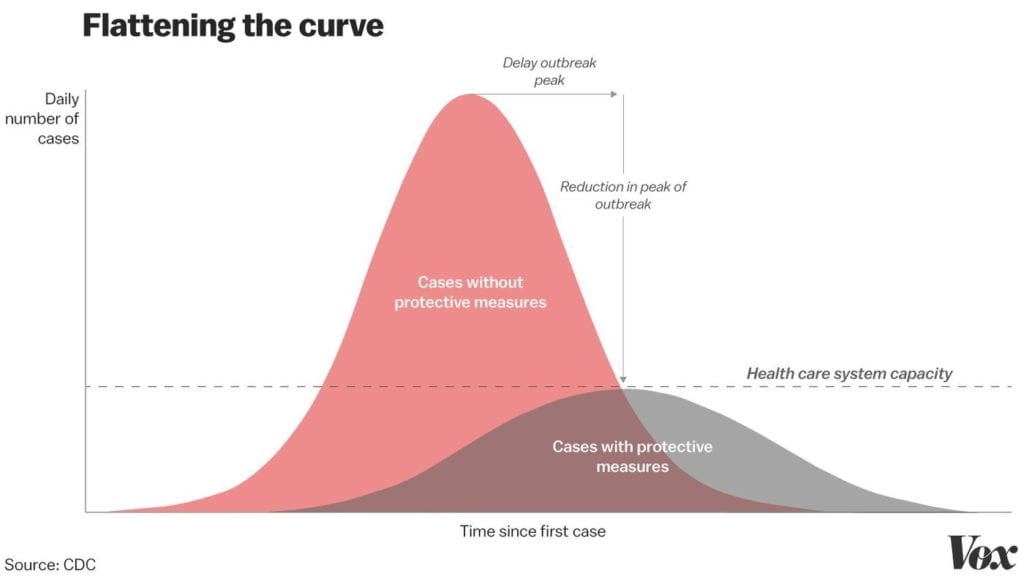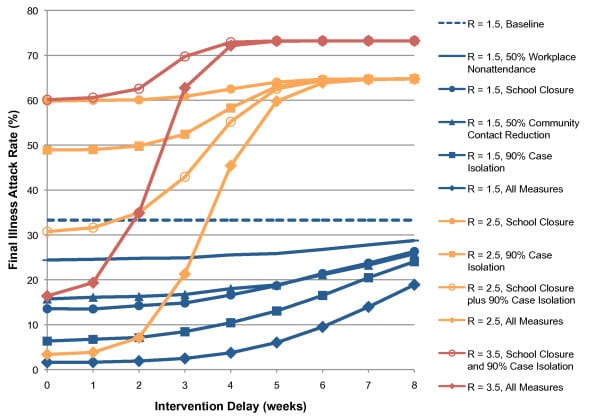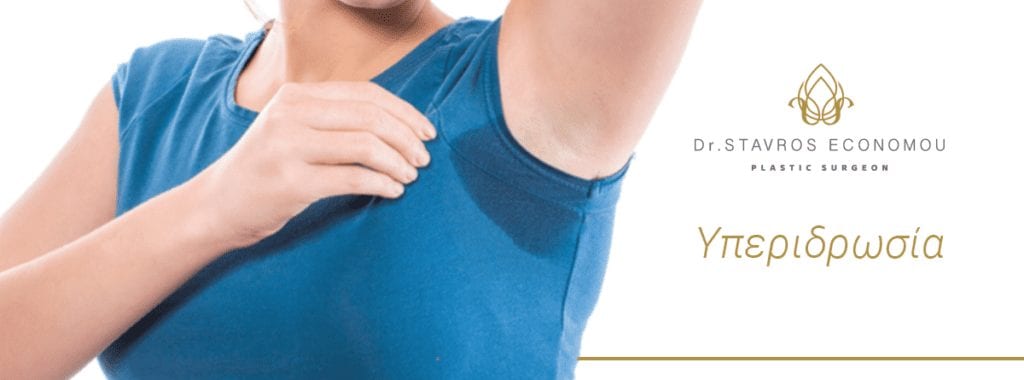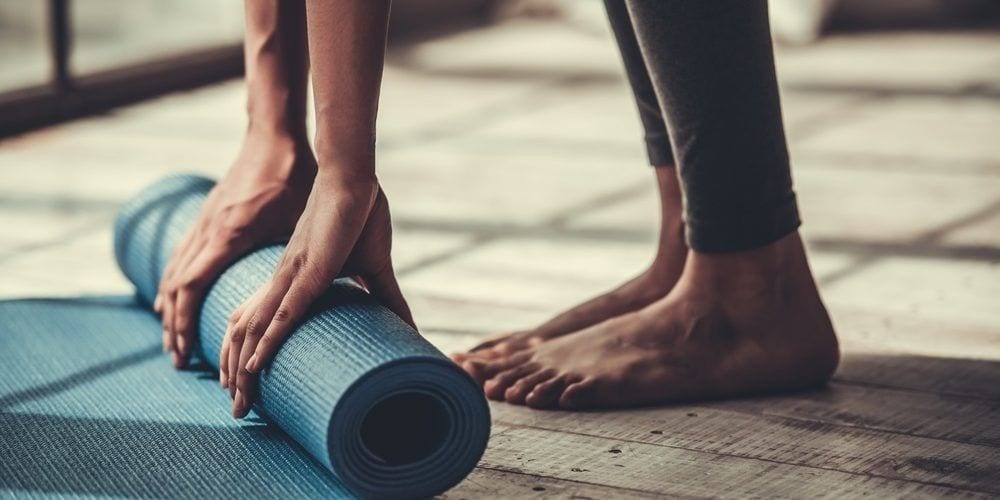I know there is some confusion about what to do next in the midst of this unprecedented time of a pandemic, school closures, and widespread social disruption. As a physician, I have been asked by a lot of people for my opinion, and I will provide it below based on the best information available to me today. These are my personal views, and my take on the necessary steps ahead.
What I can clearly say is that what we do, or don’t do, over the next week will have a massive impact on the local and perhaps national trajectory of coronavirus. We are only about 10 days behind Italy and generally on track to repeat what is unfortunately happening there and throughout much of the rest of Europe very soon.
At this point, containment through contact tracing and increased testing is only part of the necessary strategy. We must move to pandemic mitigation through widespread, uncomfortable, and comprehensive social distancing. That means not only shutting down schools, work (as much as possible), group gatherings, and public events, but also making daily choices to stay away from each other as much as possible to Flatten The Curve below.

Our health system will not be able to cope with the projected numbers of people who will need acute care should we not muster the fortitude and will to socially distance each other starting now. On a regular day, we have about 100 staffed ICU beds nationally, which can be ramped up in a crisis to about 120. Even moderate projections suggest that if current infectious trends hold, our capacity (locally and nationally) may be overwhelmed as early as mid-late April. Thus, the only strategies that can get us off this concerning trajectory are those that enable us to work together as a community to maintain public health by staying apart.
The wisdom, and necessity, of this more aggressive, early, and extreme form of social distancing can be found here. I would urge you to take a minute to walk through the interactive graphs — they will drive home the point about what we need to do now to avoid a worse crisis later. Historical lessons and experiences of countries worldwide have shown us that taking these actions early can have a dramatic impact on the magnitude of the outbreak. So what does this enhanced form of social distancing mean on a daily basis, when schools are cancelled?
Here are some steps you can start taking now to keep your family safe and do your part to avoid a worsening crisis:
1. We need to push our local, state, and national leaders to close ALL schools and public spaces and cancel all events and public gatherings now.
A local, town by town response won’t have the adequate needed effect. We need a statewide, nationwide approach in these trying times. Contact your representative and your governor to urge them to enact statewide closures. As of today, six states have already done so. Your state should be one of them. Also urge leaders to increase funds for emergency preparedness and make widening coronavirus testing capacity an immediate and top priority. We also need legislators to enact better paid sick leave and unemployment benefits to help nudge people to make the right call to stay at home right now.
2. No kid playdates, parties, sleepovers, or families/friends visiting each other’s houses and apartments.
This sounds extreme because it is. We are trying to create distance between family units and between individuals. It may be particularly uncomfortable for families with small children, kids with differential abilities or challenges, and for kids who simply love to play with their friends. But even if you choose only one friend to have over, you are creating new links and possibilities for the type of transmission that all of our school/work/public event closures are trying to prevent. The symptoms of coronavirus take four to five days to manifest themselves. Someone who comes over looking well can transmit the virus. Sharing food is particularly risky — I definitely do not recommend that people do so outside of their family.
We have already taken extreme social measures to address this serious disease — let’s not actively co-opt our efforts by having high levels of social interaction at people’s houses instead of at schools or workplaces. Again — the wisdom of early and aggressive social distancing is that it can flatten the curve above, give our health system a chance to not be overwhelmed, and eventually may reduce the length and need for longer periods of extreme social distancing later (see what has transpired in Italy and Wuhan). We need to all do our part during these times, even if it means some discomfort for a while.
3. Take care of yourself and your family, but maintain social distance.
Exercise, take walks/runs outside, and stay connected through phone, video, and other social media. But when you go outside, do your best to maintain at least six feet between you and non-family members. If you have kids, try not to use public facilities like playground structures, as coronavirus can live on plastic and metal for up to nine days, and these structures aren’t getting regularly cleaned.
Going outside will be important during these strange times, and the weather is improving. Go outside every day if you are able, but stay physically away from people outside your family or roommates. If you have kids, try playing a family game instead of having your kids play with other kids, since sports often mean direct physical contact with others. And though we may wish to visit elders in our community in person, I would not visit nursing homes or other areas where large numbers of the elderly reside, as they are at highest risk for complications and mortality from coronavirus.
Social distancing can take a toll (after all, most of us are social creatures). The CDC offers tips and resources to reduce this burden, and other resources offer strategies to cope with the added stress during this time.
We need to find alternate ways to reduce social isolation within our communities through virtual means instead of in-person visits.
4. Reduce the frequency of going to stores, restaurants, and coffee shops for the time being.
Of course trips to the grocery store will be necessary, but try to limit them and go at times when they are less busy. Consider asking grocery stores to queue people at the door in order to limit the number of people inside a store at any one time. Remember to wash your hands thoroughly before and after your trip. And leave the medical masks and gloves for the medical professionals — we need them to care for those who are sick. Maintain distance from others while shopping — and remember that hoarding supplies negatively impacts others so buy what you need and leave some for everyone else. Take-out meals and food are riskier than making food at home given the links between the people who prepare food, transport the food, and you. It is hard to know how much that risk is, but it is certainly higher than making it at home. But you can and should continue to support your local small businesses (especially restaurants and other retailers) during this difficult time by buying gift certificates online that you can use later.

5. If you are sick, isolate yourself, stay home, and contact a medical professional.
If you are sick, you should try to isolate yourself from the rest of your family within your residence as best as you can. If you have questions about whether you qualify or should get a coronavirus test, you can call your primary care team and/or consider calling 1420. Don’t just walk into a clinic — call first so that they can give you the best advice — which might be to go to a drive-through testing center or a virtual visit on video or phone. Of course, if it is an emergency call 1420.
I realize there is a lot built into these suggestions, and that they represent a real burden for many individuals, families, businesses, and communities. Social distancing is hard and may negatively impact many people, especially those who face vulnerabilities in our society. I recognize that there is structural and social inequity built in and around social distancing recommendations. We can and must take steps to bolster our community response to people who face food insecurity, domestic violence, and housing challenges, along with the many other social disadvantages.
I also realize that not everyone can do everything. But we have to try our absolute best as a community, starting today. Enhancing social distancing, even by one day, can make a large difference.
We have a preemptive opportunity to save lives through the actions we take right now that we will not have in a few weeks. It is a public health imperative. It is also our responsibility as a community to act while we still have a choice and while our actions can have the greatest impact.
We cannot wait.
Originally published by Ariadne Labs on March 13, 2020 | Updated March 14, 2020
By Asaf Bitton, MD, MPH
Rhinoplasty – Quick Facts
• Rhinoplasty is the surgical procedure to the nose that reduces or restructures cartilage and bone. In some cases, additional cartilage may be gathered from a donor site and grafted into the nose to improve its overall structure.
• Even-though it is considered to be an aesthetic procedure, a rhinoplasty can also be beneficial in the treatment of sinusitis, chronic snoring, and other respiratory issues.
• That said, a lot of patients do undergo rhinoplasty procedures for cosmetic reasons like correcting a broken nose, improving pointy tipped noses, or evening out a bump on the bridge of the nose.
RECOVERY
• Patients should spend the first 24 hours following the procedure resting with their head elevated.
• Work, exercise, and air travel should be avoided during the first week of recovery, while all other labour intensive activities must be avoided for an extra week.
• While most of the healing process is completed by the two-week mark, some swelling can persist for months. Final results can take up to a year to become fully visible.

RISKS
• Swelling, bruising, and general discomfort in and around the nose are a normal part of the healing process.
• After recovery, some patients may experience nosebleeds, facial numbness, and serious breathing difficulties.
• In certain cases, choosing the an experienced plastic surgeon and proper aftercare can help reduce these risks.
COST
• The price of rhinoplasty differs depending on a number of factors, including the surgeon you choose to work with and where the procedure is performed but also the complexity of each case.
• According to the American Society of Plastic Surgeons (ASPS), the average fee for a rhinoplasty procedure is roughly 3,800 euros.
• Additional costs like extended anaesthesia and facility fees can bring the price of rhinoplasty up to as much as 5,000 euros.
RHINOPLASTY NEAR ME
• While rhinoplasty is a very safe procedure, achieving ideal results requires the services of a professional who has a good eye for aesthetics.
• A board-certified plastic surgeon with experience performing rhinoplasty procedures will be able to share before and after pictures of their former patients with you. This should help you decide upon the health professional who is best able to meet your expectations.
Hyperhidrosis is the excessive production of sweat from eccrine sweat glands compared to normal sweat needed to regulate the body’s temperature. This is not a result of heat exercise nor emotional state.
Primary hyperhidrosis or excessive sweating can often cause emotional stress lack of confidence embarrassment depression and avoidance. These circumstances can lead to problems both at the workplace as well as in our personal lives.

Injections of toxin causes a temporary inactivity in the action of these sweat glands as a result there is no or limited amount of sweat around the injected area. Areas injected include the armpits feet and hands as well as the genitals or other areas of focal hyperhidrosis.
Treating the armpits is relatively pain free with the use of local numbing creams and needs to be repeated from 4 to 9 months as required.
Recovering from any surgical procedure is a balance act between providing your body the time it needs to heal properly, and getting active as soon as possible.
Rest: Try to mostly stay in bed or on the couch with your head comfortably elevated, and a few pillows under your knees. This will help to keep your chest slightly elevated and reduce the stress on the skin of your belly.
The skin in the tummy area will have been stretched at the end of your surgery, so reducing the tension on the incision will help with blood flow and further reduce the chances of any complications.
Exercise: During these first few days you should be very careful when moving around. While walking is recommended, too much movement this early in your recovery can cause friction between the skin and underlying muscles, rather than them knitting together. This can lead to fluid or blood build-up beneath the skin, known as seromas and hematomas. The purpose of the drains is to help pump the fluid out of the body, but if you move too much, fluid will build-up despite the drains.

Diet: You’ll most likely be able to return to your normal diet, but be sure to drink a lot of fluids, including juices or isotonic beverages, especially during the first 72 hours.
Compression garments and drains: During these first few days of recovery you’ll probably be instructed to wear a compression garment. This helps to reduce swelling and prevents harmful fluid build-ups. You should wear the garment 24 hours a day during this initial recovery period.
Don’t remove it for at least the first five days, except when showering. If it causes itchy or uncomfortable sensation, you can wear a thin tight cotton shirt underneath it. Your compression garment should fit snugly but not impede your breathing or be painful. If it is, please tell your surgeon. They may provide you with a different one.
If one or two drains were placed during surgery, you will need to take care of them. The drain bulb will need to be emptied as it fills, and the amount of fluid should be measured and recorded. This information is important for your surgeon to assess how you’re healing and to resolve any problems before they become serious. This process will have to be repeated several times until the drain can be removed, which may be a few days to a week or more.
Pain management : After abdominoplasty it’s normal to have pain and discomfort. Don’t be afraid to take your pain management medication as prescribed by your surgeon. Some patients might be given a pain pump designed to treat the area with a local anesthetic. Be sure to discuss about pain medication with your surgeon, but you should be able to combine approved pain pills with the pain pump without any problems. These two types of pain medication are very different, so they won’t react negatively with one another, and combining them can help speed up your recovery.
Follow-up appointments : Some time within the first 5 days or so you’ll most likely have your first post-op follow up appointment. Most people will have their drains and pain pumps removed during this meeting. Once all the tubes, drains, and pumps are fully removed you’ll feel a bit better, and a lot more mobile. Your surgeon will then discuss the plan for the rest of your recovery with you.
Fat injections vs. dermal fillers
Facial fat injections differ from dermal fillers in a few important ways.
Dermal fillers made from hyaluronic acid typically produce faster results than facial fat transfers. And in case your injectable filler does not suit you, hyaluronidase, can be used to reverse the effects almost instantly. The permanent nature of fat transfers makes “un-doing” poor results a more challenging procedure.
Many doctors recommend “trying out” the look of injectable dermal fillers first, before moving on to facial fat grafting. Since dermal fillers are temporary and can be easily removed, you may want to start with the faster and lower-risk option before considering any permanent ones.
“As for the face, I prefer hyaluronic acid-based fillers to test the patient’s new look, in case they are unhappy with the changes,” explains Limassol Plastic Surgeon, Dr. Stavros Economou.
Dr. Economou adds “If the patient isn’t satisfied, the product can be dissolved,”. “But if there is an issue with fat grafting, it requires surgery to correct. Typically, I would offer a hyaluronic acid filler first. If the patient is pleased with the results, I may discuss fat transfer at that time.”
While the risks of both procedures are very low, facial fat transfers do affect two sites on the body, and may cause minimal scarring at the extraction site. On the other hand, the autologous nature of fat transfers means that the risk of infection is extremely low, and your body is very unlikely to suffer any adverse allergic reactions.
In terms of costs, injectable fillers are cheaper per session — but since you’ll need to revisit your plastic surgeon repeatedly during the next years, the costs of repeated dermal filler procedures can be higher over time.
Both solutions are immensely popular. If you’re looking for a “quick fix”; dermal fillers are tried-and-true, fast, easy, and have a short recovery period. If you’re looking for a more permanent route to facial rejuvenation, you might want discuss about facial fat grafting with us.
Breast Augmentation and swelling: What you see immediately after your breast augmentation is not what you will end up with — swelling will make your breasts appear much larger than anticipated and they will be higher than expected for several weeks or months until they fall into place. The swelling will settle within three to four months, although you probably won’t know your final bra size for sure until six months after the bandages come off.
Pain: Most women who have undergone breast augmentation in Limassol by Dr Economou, will tell you that the surgery was less painful than they expected; also worth mentioning is the stiffness and the bruising for the first few days.
Drainage tubes: Depending on the surgeon’s preferences and experience, drainage tubes may be used to reduce the risk of fluid build up around the implant to prevent a capsule from forming. Dr Economou will not use them in breast augmentation surgery, for longer than necessary because they can introduce bacteria.
Extended recovery time: After 24 hours, you will be able to resume everyday activities, and return to work within three to seven days. But the swelling and mild discomfort will remain for weeks, and your activities will be restricted. For example, you won’t be able to sleep on your stomach or exercise vigorously for several weeks.

Loose clothing: Loose tops, zippered sweat shirts, and button-up blouses are recommended for your post-surgical wardrobe. However, any item of clothing that you can put on and take off without raising your arms or making an exaggerated movement is preferred. You will have a postoperative garment or sports bra that zips at the front to provide your new breasts with support.
No alcohol: Abstain from drinking for at least two weeks after your breast augmentation in Cyprus, to minimize the risk of bleeding and promote healing of your wounds.
Difficulty showering: Lifting your arms to wash your hair, bending down to wash your feet, and reaching around to wash your back must be avoided during your initial recovery period. With that in mind, you may want to stock up on dry shampoo or have a close friend or your caretaker help you with bathing. You’ll likely be restricted to sponge baths until your surgeon gives the green light to step into the shower. When showering, it is important to face away from the water spray and carefully dry incisions if they get wet.
Light exercise: You can forget the gym for a few weeks after your breast augmentation in Limassol. Lifting arms above your head and objects heavier than five pounds is generally not allowed for two weeks. However, general movement is encouraged to promote circulation.
New bras: After your surgery, you will have to wait four to six weeks until you can trade the sports bra for new lingerie. In the meantime, make sure your sports bras provide sufficient support and do not rub your incisions.
Living in Cyprus is a blessing in many aspects. The freedom to comfortably enjoy the outdoors during the biggest part of the year.
Our skin is the first barrier to the harmful effects of the environment. Firstly, it acts as a filter for the harmful UV radiation and effectivelly does so. However as a filter it has it’s limitations. The sun’s radiation injures our skin. Our skin repairs up to a point after which skin cancer could occur.
We have learned in the last few years that not only is the sun’s UV radiation is potentially harmful in large doses, it also causes additive damage to one’s skin cells. This means that as our life expectancy has increased so did the incidence of skin cancer relating to UVR (Ultraviolet Radiation) exposure. In addition we have become more adept to identifying skin lesions more often. Also the increase in popularity of outdoor activities is a factor that plays a role in the increase seen over the last few decades in the occurence of skin cancer.

The goal is to avoid exposing our skin to the sun’s harmful UV Radiation especially at times when it is at its peak from 10:00 to 16:00. Always wear protective clothing even when enjoying the sea like lycra UV tops. You should wear sunscreen daily, investing in a sunscreen is recommended to be a part of your skin care routine.
In conclusion, despite the above measures we take to protect our skin from sun damage the skin’s capacity to filter UV radiation is limited. As a result your skin could experience damage of varying degree. It is important to note and remember.
* ABCDE of skin lesions : Asymmetries, uneven borders, color variation, diameter more than a pencil butt i.e. 6mm, evolution in how they look or act i.e. shape, size, new onset of symptoms like scratching, bleeding.
* Wear protective clothing, sunscreen and avoid sun exposure during 10:00 to 16:00 especially during the summer.
* Any skin scrape that does not heal in a month needs to be seen by a doctor.
* Get treatment for any suspicious lesions by a certified and experienced physician.